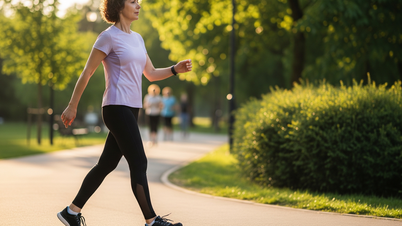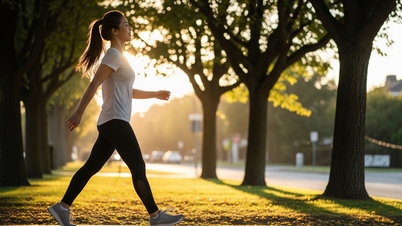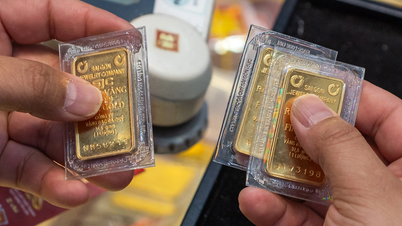 |
| Walking after dinner should be on flat terrain. (Illustration image created by AI) |
Fat burning and weight loss goals
Walking before meals, especially in the morning, is considered an effective way to help burn excess fat. When exercising on an empty stomach, the body tends to use stored fat for energy because it has not been fed new calories.
This mechanism, if maintained regularly and long-term, can promote weight loss. Therefore, many weight control programs often encourage morning walks before meals as a simple but effective method.
Meanwhile, walking after meals also brings certain benefits, especially with insulin control and limiting fat storage. After eating, blood sugar (glucose) tends to spike and then drop quickly, easily leading to fat storage - especially in the abdomen.
Light exercise immediately after eating helps slow down the rise in blood sugar, thereby reducing the secretion of insulin - a hormone that plays a key role in fat storage. In other words, low insulin means less fat storage.
Aim to improve digestion
Light exercise after eating helps food move more quickly through the digestive tract, thereby reducing bloating, heartburn and constipation. This is especially true if you feel heavy and sluggish after a large meal. A light walk is a simple way to improve this condition and promote smoother digestion.
For people with acid reflux, the timing and intensity of walking are even more important. Experts recommend only light walking after meals, avoiding climbing hills or jogging because vigorous movements can make symptoms worse.
It's best to walk slowly on flat terrain, especially after dinner - when the digestive system slows down.
Goals to improve mental health
Walking before meals can improve mental focus, especially before lunch when the body enters the mid-morning slump. Just 10 minutes of outdoor exercise can significantly increase the amount of oxygen supplied to the brain, while also reducing the level of the stress hormone cortisol.
So, if you want to feel calmer and more in control before eating, taking a walk before meals can be a simple yet effective solution to help you avoid the "eat everything" situation.
Blood sugar reduction goals
In Indian Ayurvedic medicine, a slow walk after a meal – especially dinner – is called “shatapavali” and is considered essential for digestion.
Modern science agrees. Several recent studies have shown that walking for 10-20 minutes after eating, even at a slow pace, significantly reduces blood sugar spikes, especially in people with type 2 diabetes or prediabetes.
A 2022 meta-analysis published in the journal Sports Medicine looked at data from multiple studies and found that taking a light walk after meals — just 2–5 minutes — can lower blood sugar more effectively than sitting or standing.
That's because when we exercise after eating, our muscles use some of the glucose from the food, reducing the amount of glucose entering the blood and reducing the insulin load.
Source: https://baoquocte.vn/di-bo-truoc-va-sau-bua-an-ho-tro-giam-can-kiem-soat-duong-huet-cai-thien-tieu-hoa-321167.html


![[Photo] President Luong Cuong receives President of the Cuban National Assembly Esteban Lazo Hernandez](https://vphoto.vietnam.vn/thumb/1200x675/vietnam/resource/IMAGE/2025/9/30/4d38932911c24f6ea1936252bd5427fa)

![[Photo] The 1st Congress of Phu Tho Provincial Party Committee, term 2025-2030](https://vphoto.vietnam.vn/thumb/1200x675/vietnam/resource/IMAGE/2025/9/30/1507da06216649bba8a1ce6251816820)
![[Photo] Panorama of the cable-stayed bridge, the final bottleneck of the Ben Luc-Long Thanh expressway](https://vphoto.vietnam.vn/thumb/1200x675/vietnam/resource/IMAGE/2025/9/30/391fdf21025541d6b2f092e49a17243f)





























![[Photo] Solemn opening of the 12th Military Party Congress for the 2025-2030 term](https://vphoto.vietnam.vn/thumb/1200x675/vietnam/resource/IMAGE/2025/9/30/2cd383b3130d41a1a4b5ace0d5eb989d)
































































Comment (0)